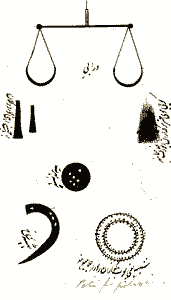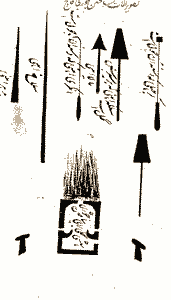|
context weblog 2001 |
|
| home | site map | about context | lang >>> español | |
|
>>> context weblog |
|
|
february 13, 2001 :: |
inauguration
of *sarai space and network for digital culture in delhi |
|
|
|
|
|
|
|

|
new media in south asia "The new media public space that has emerged in the West is non-existent here. "However if access to virtual electronic space is not the only defining feature of new media practices, we begin to see a very different situation here. One can say that the 'new' in South Asia refers to dynamic efforts to put together an interface of various old media's like radio, music, cinema, television with new computer and phone technologies, which have transformed the face of everyday life in urban South Asia for millions of ordinary people. It is this specific historical character of the contemporary India that gives new media here such an interesting and dynamic character, which is not limited to the web and electronic networks alone." "Consider for example the spread of hundreds of thousands of Public Call Offices (P.C.O's) or human-operated phone booths all over India that have put into motion a new experience of space, time and communication for millions of people. Many of these public spaces also function as computer shops which provide a number if facilities to customers which include multi-media, and increasingly, e-mail and the internet. This is an emerging electronic public culture, which is slowly finding the terms of its reference." "In addition the 'contemporary' in South Asia is a highly media-tised space, where television, music, cinema a re constantly speaking to each other in ways that were never done before. Both the speed of the transformation of the old medias, as well as the new modes of transmission (pirate, semi-legal and legal cable) is significant. It is this cluster of cultural practices that establishes the terms of the 'new media' here, not simply access to the web." "However, the development of the space created by new media technologies here has been rigidly circumscribed from the very beginning by the state and by market forces. The internet, for example is already seen as a resource to be harnessed for commerce, and a territory to be policed by the state, not as a public space for information, education and self expression The notion of an on-line community arising from a free exchange of ideas, images, information and expression is something that has to be struggled for and protected in the Indian/South Asian context." From *New
Media in South Asia* in |
| |
 |
sarai "Sarai : (sary, sho-rai) n. (Hindi, Urdu, Punjabi, Bengali, Persian, Turkish) an enclosed space in a city, or, beside a highway, where travellers and caravans can find shelter, sustenance and companionship; a tavern, a public house, a meeting place; a destination and a point of departure; a place to rest in the middle of a journey. "Sarai, the new media initiative is an attempt to create an open and lively space for a bold and imaginative re-constitution of urban public culture, especially in a South Asian/Asian context, with strong global links. As a space and a network, it will connect different forms of new as well as established media practices, theoretical interventions, research, education, and activism." From *Sarai site* "Sarai began to take shape in the summer of 1998 in Delhi. The summer of '98 was a time for many new beginnings in the city of Delhi. The nineties had been a decade marked by doubt and rethinking on many fronts... (there) was a desire to create a space which, like the sarais for which Delhi was once well known, would be a convivial place where people from many backgrounds could gather, converse and work together." From *How Sarai Happened* Initiators were Ravi Vasudevan and Ravi Sundaram from the Centre for the Study of Developing Societies, and Raqs Media Collective (Jeebesh Bagchi, Monica Narula & Shuddhabrata Sengupta). The Waag Society for Old and New Media is partner of Sarai. Sarai is made possible with the support of the Dutch Ministry of Foreign Affairs, the Daniel Langlois Foundation (Canada), the Centre for the Study of Developing Societies (India) and the HIVOS Cultural Foundation (NL-India). |
| |
|
|
waag society As it is known today the Society for Old and New Media, because is housed in Waag building, is "a cultural research and development centre for communications technology. Central to the Society's aims is the development of technological applications for the cultural and social expression of groups and individuals. "Designers, software engineers, artists and scientists work together closely within the Society for Old and New Media, and for projects, collaboration is sought with partners in the social sector, the educational field and trade and industry." From Society for Old and New Media site. This media center is part of *The Virtual Platform*, "a network for policy and cooperation in the field of new media and 'living culture' in the Netherlands." Involved too in setting up of the *European Cultural Backbone*, a network of innovative cultural centers in Europe that "aims to foster creative uses of new technologies in the public interest." Founders of the Society for Old and New Media in 1994 were *Caroline Nevejan* and *Marleen Stikker* -- wich co-founded De Digitale Stad (DDS), the first Digital City on the Internet in 1993 --. Both share a specific interest in public space and the future of the public domain, and roots in Amterdam's alternative cultural movement. |
| |
|
|
solar power, internet and digital culture to rural india Greenstar India announced that it will build 50 solar-powered community and ecommerce centres in remote villages throughout India over 2000-2002 years. On October 2, 2000 was inaugurated the first site in Parvatapur village, about 150 km from the Andhra Pradesh capital of Hyderabad in southern India, as part of the celebration of the birth of Mahatma Gandhi. "To generate income through ecommerce, Greenstar villages focus on India's vivid traditional culture -- authentic art, music, legends, literature, history and sacred way of life, long a source of fascination by people everywhere in the world. Greenstar is employing a team of artists and teachers to record elements of rural Indian culture, working closely with the people of each village. This original concept is already working in the Palestinian Authority and Jamaica. The result will be a powerful, unique collection of "digital culture" -- a gallery of music, artwork, photographs, video, poetry and other arts, which can be distributed in high-resolution digital form throughout the world, instantly and efficiently. "The revenues from digital culture will be used to fund basic needs of each village for its future, as decided by the people themselves -- deploying tools that include clean solar power, telemedicine and vaccination resources, basic education, micro-credit, community organizing, and a high-speed, two-way connection to the world through the Internet." From *Greenstar India Introduces Solar Power, the Internet and *"Digital Culture" to Rural India* |
|
|
|
|
|
|
|
source :: |
sarai site :: grafik |
|
|
|
|
| home | site map | about context | lang > español | |
context weblog >>> http://www.straddle3.net/context